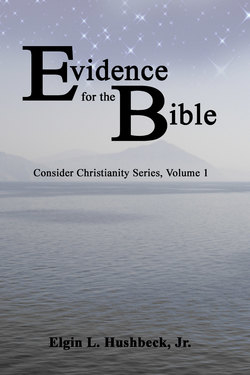Читать книгу Evidence for the Bible - Elgin L Hushbeck Jr. - Страница 14
На сайте Литреса книга снята с продажи.
The Gospel of Thomas
ОглавлениеRecently, many have renewed the charge that some books were left out of the Bible. The book most frequently referred to along these lines is the Gospel of Thomas which was found among a whole library of Gnostic documents discovered at Nag Hammadi, Egypt in 1954.
Gnosticism refers to a variety of religious movements that were popular during the 2nd century. They get their name from the Greek word gnosis which means ’to know.’ Most of these religions claimed special or secret knowledge which led them to the truth. Gnosticism was strongly opposed by the early Church and the letters of John (the last New Testament letters) were written in opposition to early Gnostics.
The Gospel of Thomas is clearly gnostic in origin. Unlike the other Gospels which record many details of the life of Christ, the Gospel of Thomas is really just a collection of 114 sayings of Jesus which supposedly were secretly revealed to Thomas. As Craig Blomberg has pointed out, “Many of the sayings have a patently Gnostic flavor.”17
While clearly gnostic in origin, over half of the sayings are very similar to sayings that are found in the Bible. Since there are no details of Jesus’ life, some have suggested that Thomas may be earlier than the four Gospels found in the Bible and may have even served as a source for them. Some have even argued that Thomas is an authentic Gospel and it was recently published by the Jesus Seminar along with the other Gospels.
In spite of its recent popularity, there are strong reasons to question the authenticity of Thomas. First and foremost would be its gnostic teachings, which are incompatible with the teachings of the New Testament. While some might claim that perhaps Thomas represents the true teachings of Jesus, there are problems with this. First, unlike the Gospels found in the New Testament, no scholar would argue that the Gospel of Thomas was really written by Thomas. In addition, it would appear that the writer of Thomas used the Gospels as sources. As Blomberg points out:
Where Thomas parallels the four gospels it is unlikely that any of the distinctive elements in Thomas predates the canonical versions. In a number of cases these distinctives reappear in the Coptic translations of the New Testament, which no one would claim reflects independent sources of information about Jesus. . . It is hard to avoid the conclusion that the author of the Gospel of Thomas knew the New Testament Gospels as they now stand, even if he may have quoted them fairly loosely.18
Thus, there would appear to be little to argue in favor of the Gospel of Thomas as being part of the canon. One thing is clear from the writings of the early church fathers: they considered Scripture to be a very narrow classification of books. Only those books that could meet the strict standards were considered. They did not simply pick the books they liked and rejected those they didn’t. The Shepherd of Hermas, for example, was not only a book that many in the early church praised, but they encouraged people to read and study it. Yet, while they liked the book, it did not qualify as scripture, and thus was not included in the canon. Thus the question is not why was Gospel of Thomas rejected, but why should it be accepted as Scripture?
